Clay soil can be difficult for gardeners to work with. It drains slowly and can be easily compacted, especially when wet. There is still hope for you if you are dealing with clay soil. While it can be challenging, many plants can and will thrive in this soil type! Keep reading to learn about the different plants that will grow in clay soil and full sun.
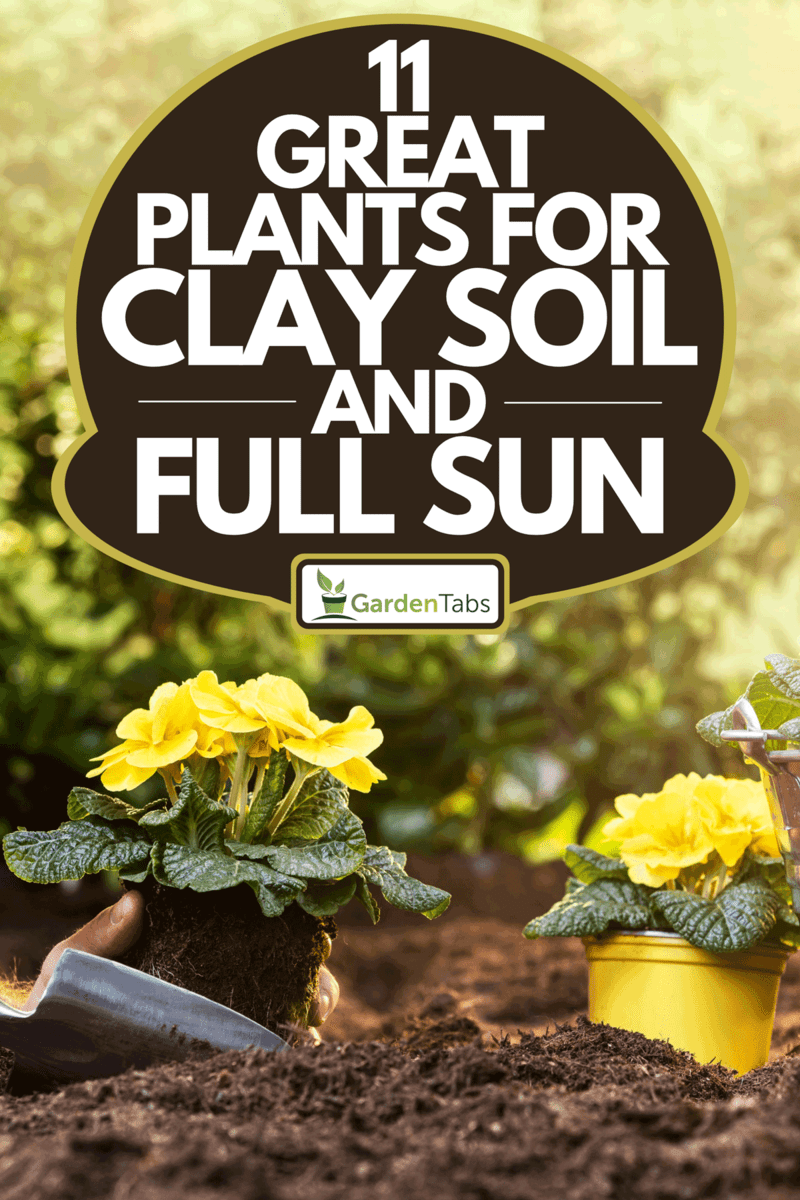
1. Black-eyed Susan (Rudbeckia hirta)
The black-eyed Susan (Rudbeckia hirta) plant is an excellent choice for beginner gardeners because of its resilience. This plant can tolerate nearly any type as long as there isn't excessive moisture. Black-eyed Susans do well in soil that is slightly acidic to slightly alkaline. It's best to give black-eyed Susans a full day's worth of sun.
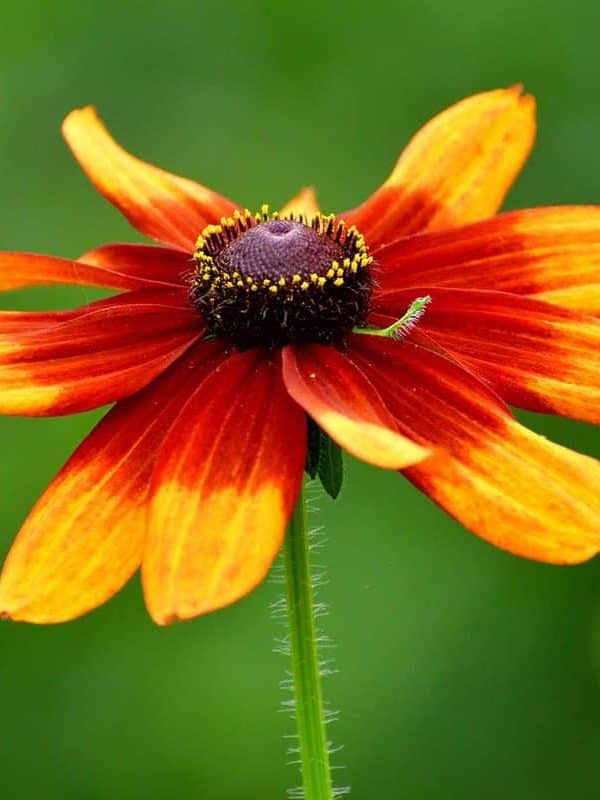
These flowers have a dark-brown or black central cone surrounded by petals. The petals are typically yellow, orange, or red. Black-eyed Susans will bloom from May to July.
2. Daylily (Hemerocallis)
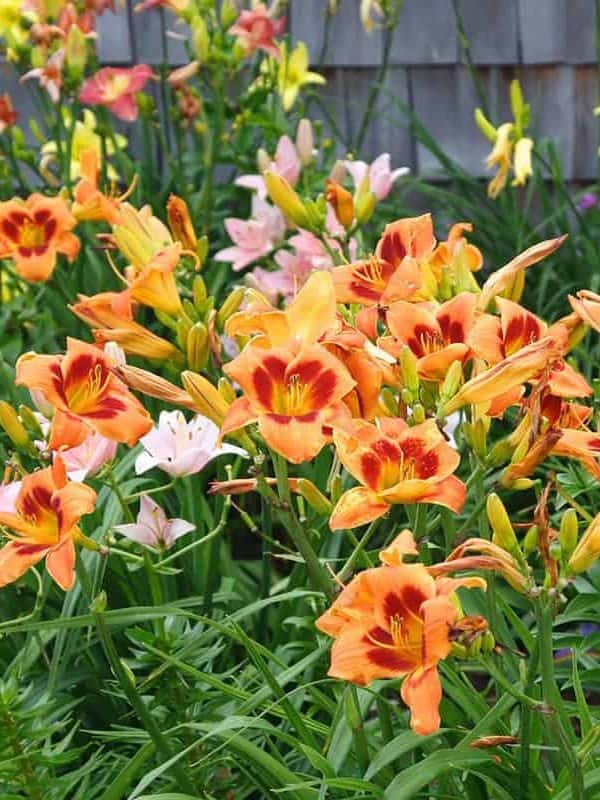
Daylilies are traditionally orange or yellow. However, they've since been hybridized to produce many other colors. You can identify daylilies by their folded leaves and large flowers. Daylilies get their name because of the short bloom time of the flower. These plants will bloom in the morning and then wither in the afternoon.
Daylilies are hardy for zones three through nine. This hardy plant will tolerate all types of soil. Although, the daylily does prefer soil that is slightly acidic and moist. Daylilies enjoy full sun to partial shade. If they receive too much sun, the flower's colors may fade.
Check out "Do Deer Eat Daylilies? [And How To Prevent That]" for Hemerocallis care advice!
3. Switchgrass (Panicum virgatum)
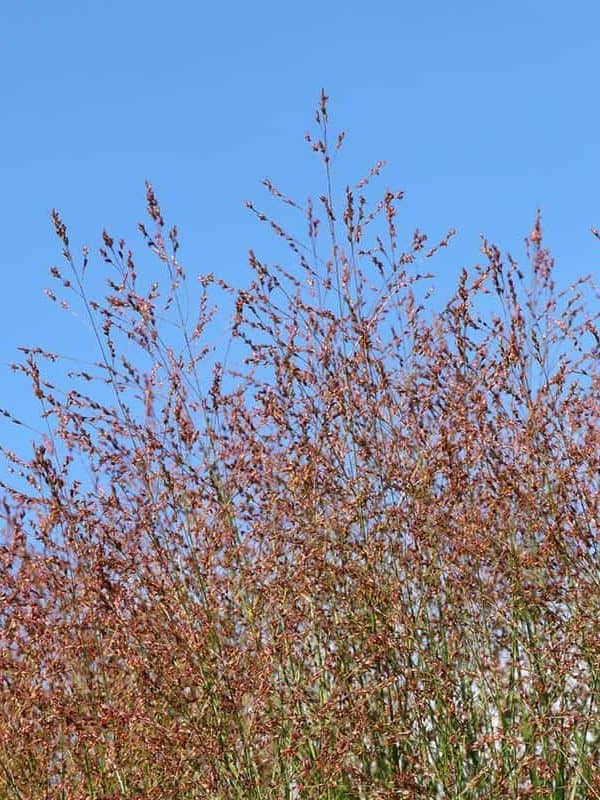
Switchgrass is commonly grown as ornamental grass or as ground cover. It typically grows between three and six feet. However, it can grow as tall as eight feet. Switchgrass plants have flat leaf blades. This plant also produces a hairy ligule.
Switchgrass can tolerate a wide range of soils. These soils include clay, loam, and sandy soils. This plant is tolerant for USDA zones three through nine. It should also get at least six hours of sun each day. If your switchgrass isn't getting enough sun, it will become floppy.
4. Winterberries (Ilex verticillata)

The winterberry or Winterberry Holly is a deciduous tree. It has thin, gray-brown bark and can grow between 10 and 15 feet tall. Winterberry plants have red berries with a black dot on them. The berries are a food source for birds. However, the berries and leaves are toxic to humans.
The Winterberry Holly is a tolerant plant. It can be grown in many different conditions, but winterberry prefers acidic loam soil. However, they will grow in clay soil and poorly drained soil. You should aim to give your winterberry a full day of sun. However, it can tolerate partial shade.
Check out "How Big Can A Holly Tree Get?" to learn more about these plants!
5. Blue Star (Amsonia hubrichtii)
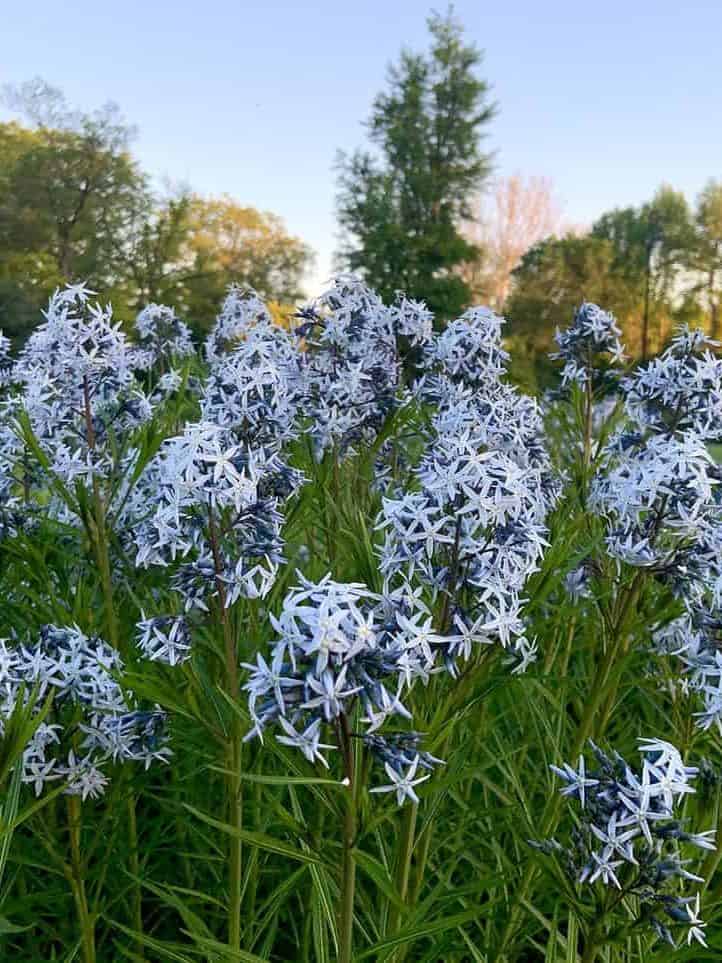
The blue star is an uncommon perennial. From a distance, the flowers on this plant resemble a lily. However, the powdery-blue flowers are more star-shaped and appear in clusters from April to May.
Blue star plants are low maintenance. They can grow in many types of soil. However, it must be well-drained. Blue star plants enjoy a full day of sun. Although, they can tolerate partial shade. You'll know your plant is receiving too much sun if the stems start to flop.
6. Adam's Needle Yucca (Yucca filamentosa)
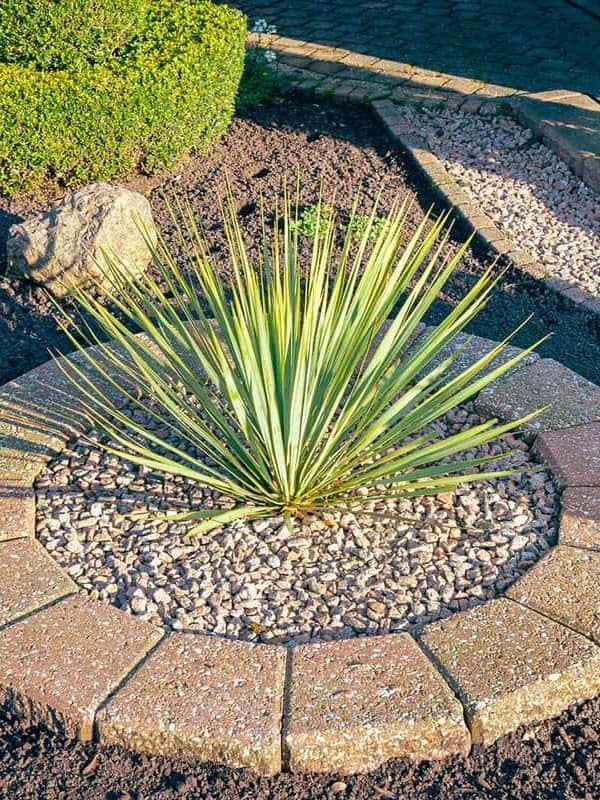
Adam's Needle Yucca is a flowering plant that grows between three and eight feet tall. The flower stems can reach up to 10 feet tall. The Adam's Needle Yucca has stiff, sword-shaped leaves. The flowers are cream-colored and bloom from late spring to summer. You can distinguish this yucca from others by the white filaments along the leaf margins.
The best conditions for Adam's Needle Yucca are sandy soil and full sun. However, they are tolerant of partial shade and other soil types. Adam's Needle Yucca is resistant to soil compaction, which can be helpful for clay soil.
Check out "Yucca Not Flowering – What To Do?" for yucca care advice!
7. Purple Coneflower (Echinacea purpurea)

The Purple Coneflower, also known simply as the coneflower, is a perennial that grows between three and four feet tall. While it is known as the Purple Coneflower, it can produce many different colors. The most common are white, pink, and purple. The flowers are typically between three and six inches large. They bloom from June until August.
Coneflowers prefer soil that is well-drained and loamy. However, they will also thrive in clay soil if it isn't overwatered. Coneflowers require at least six hours of sun each day. You can provide partial shade in the afternoon if you live in a hot climate.
You should read "When To Transplant Coneflowers – And How To" for more information!
8. Flowering Dogwood (Cornus florida)

The flowering dogwood is a deciduous tree with attractive flowers and fruit. It typically grows between 15 and 25 feet tall with a spread between 15 and 30 feet.
Flowering dogwoods have a dark gray, brown, or black bark that will scale as it ages. The flowers bloom in spring from March until May. The flower colors for the dogwood are yellow, green, pink, or white. The fruit is red or green and appears from August until October.
Flowering dogwoods can adapt to many soil types as long as it is well-drained. This tree needs full sun to partial shade. Since it is an understory plant, it may need protection from the afternoon sun. Keep in mind that flowering dogwoods tend to have disease problems. You'll need to be careful watering this plant, or it could get root rot.
9. Blazing Star (Liatris spicata)
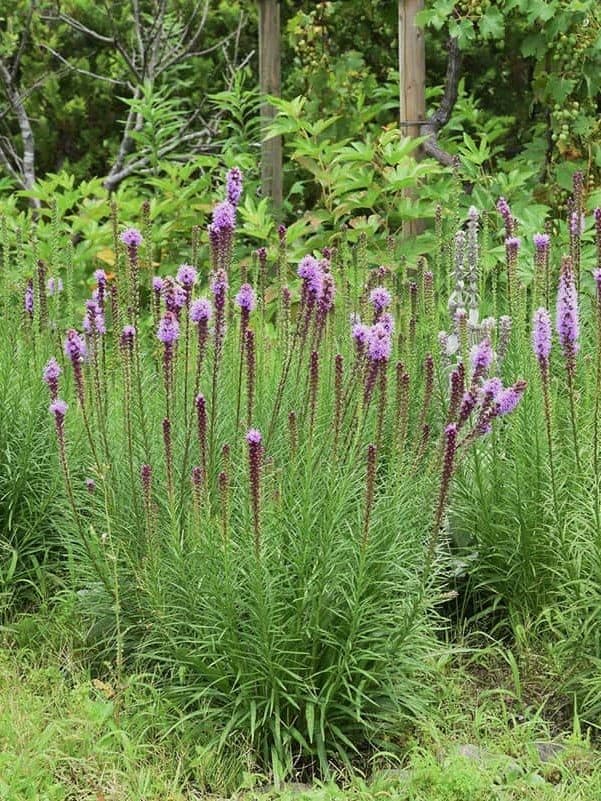
The Blazing Star is also known as the Marsh blazing star. It typically grows between three and six feet tall. This plant has pink, purple, red, or white spike flowers that bloom in the summer.
The Snakeroot plant prefers moist, well-drained soil. Unlike other species of Liatris, this blazing star will tolerate wetter soil. Your soil should have a pH level that is neutral or acidic. Make sure to give your plant full sun. The blazing star is tolerant of summer heat. So, don't worry about protecting them from the sun.
10. Oxeye Sunflower (Heliopsis helianthoides)
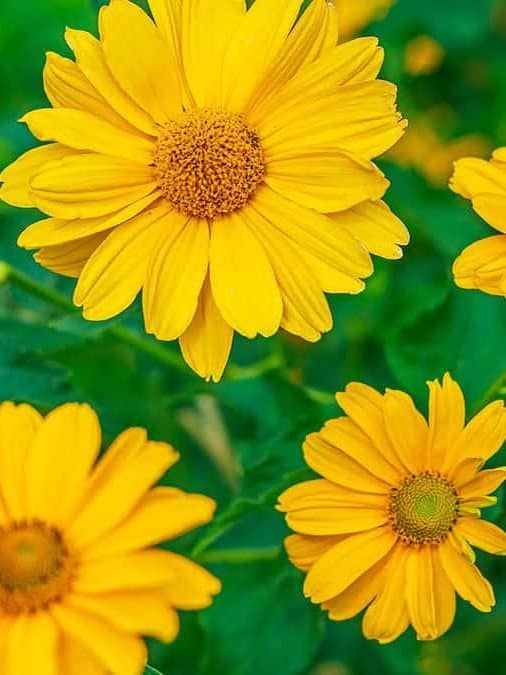
The oxeye sunflower grows between three and five feet tall. It looks very similar to the actual sunflower, with yellow flowers and a brownish center. You can expect the flowers to bloom from May until October.
Your oxeye sunflower will do best in well-drained soil. However, it tolerates all soil types, including clay, sand, and poor-quality soil. You should aim to give your oxeye sunflower at least six hours of sunlight each day. This plant is resistant to heat, so shading them should be unnecessary.
11. Bayberry (Myrica cerifera)
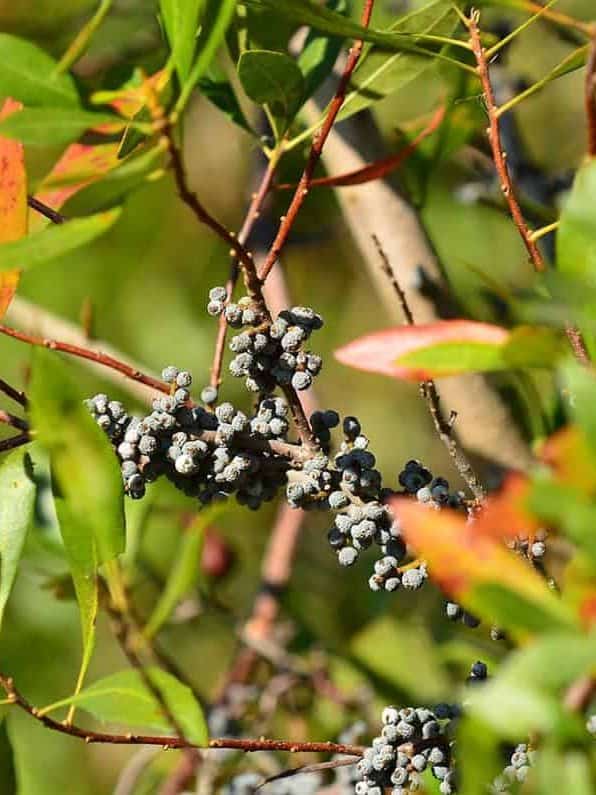
The bayberry is an evergreen tree with light olive green leaves. When the leaves are crushed, it has an aromatic smell. This tree has gray-brown, nearly white bark that is thin and smooth.
In spring, the bayberry produces yellow and green flowers. The bayberry will have blue, silver, or white-colored fruit from August to October. This fruit is edible for birds.
Bayberries do best in well-drained soil in full sun. However, this plant is very tolerant of other conditions. You can plant bayberry in clay soil even if it isn't well-drained. While you should try to give this tree at least six hours of sun, it will also tolerate partial shade.
In Conclusion
Having clay soil and lots of sunlight isn't the end of the world. These eleven plants are all capable of being grown in these conditions! When selecting plants for clay soil, remember that drainage may be a problem. Be careful of overwatering because of how slowly clay soil loses water.
Need some more advice? Read "11 Great Plants For Clay Soil With Poor Drainage" for even more plant tips!
